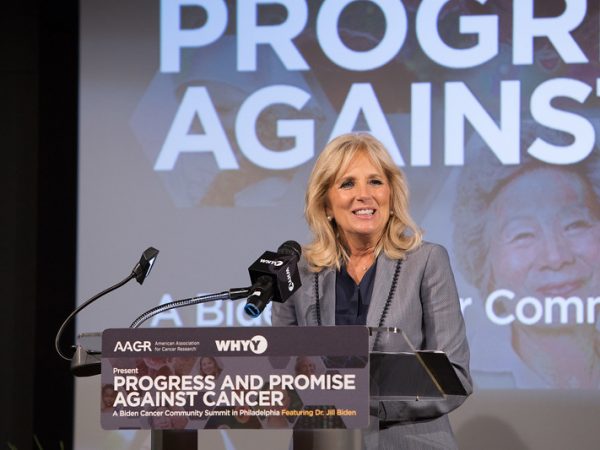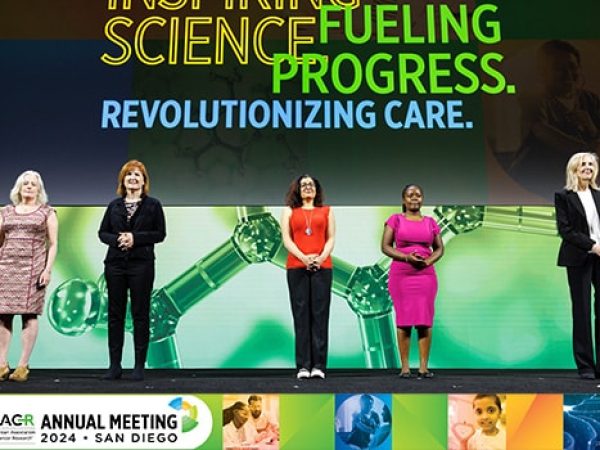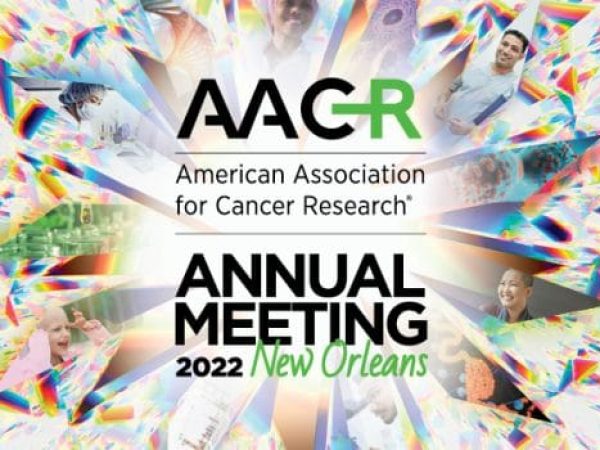AACR Virtual Annual Meeting II: Why Are Cancer Rates Increasing Among Young Adults?
Cancer is often described as a disease of old age. However, certain cancers have become increasingly prevalent among younger populations during recent decades, even as the prevalence of the same cancers has declined among older individuals. An educational session at the AACR Virtual Annual Meeting II reviewed the latest trends and examined potential reasons behind the increases.
Which cancers are rising in young adults?
In the United States, colorectal cancer and breast cancer are among the most rapidly increasing cancers in younger populations and represent the most common cancers in men and women, respectively, between ages 18 and 49.

While the incidence and mortality rates of these cancers in young adults remain lower than those in older adults, there are several reasons that the rising rates are of concern. As explained by Stacey Fedewa, PhD, session moderator and an epidemiologist and senior principal scientist at the American Cancer Society, cancer in younger adults leads to a greater loss in productivity and life years. In addition, younger patients are more likely than older adults to face medical financial hardship, lack of health insurance, and disruptions in insurance coverage, partially due to their dependence on employment for health insurance. Unlike older patients, younger patients must consider the effects of cancer treatment on fertility if they wish to have children in the future. Furthermore, younger patients are more likely to be diagnosed with advanced disease or more aggressive subtypes, and racial disparities appear to be more pronounced among younger patients with breast cancer.
There is mounting evidence to suggest that the increasing rates of cancer in young adults are not simply due to greater detection; however, the additional factors contributing to the rise of cancer in younger populations remain unclear. Presentations from this session reviewed potential factors that may promote cancer development in young adults.
Why is colorectal cancer on the rise in young adults?
Yin Cao, ScD, MPH, an assistant professor at Washington University School of Medicine in St. Louis, and Xavier Llor, MD, PhD, a professor at Yale School of Medicine, described the potential influence of environmental, behavioral, and genetic factors on the increasing prevalence of colorectal cancer in young adults.

Cao explained that changes in diet and the rising rates of obesity and diabetes in young adults may contribute to the observed increases in colorectal cancer. Sedentary behavior, such as watching television for prolonged periods, is a known risk factor for obesity and Type 2 diabetes and has been suggested to increase the risk of early-onset colorectal cancer. The increased risk associated with prolonged television-viewing may be due to lower energy use, higher caloric intake, extended exposure to fecal carcinogens, impaired glucose homeostasis, decreased vitamin D levels, and increased gut dysbiosis.
There is also some limited evidence that early-life factors could affect the gut microbiome and, in turn, influence colorectal cancer risk. These factors include mode of birth (vaginal delivery or Caesarean section), antibiotic use, whether one was breast-fed, maternal nutrition, and exposure to maternal stress.

In addition, small nucleotide polymorphisms may be associated with increased colorectal cancer risk in young adults, but these genetic variants are unlikely to be driving the increase, explained Cao. Similarly, Llor posited that the development of early-onset colorectal cancers may be influenced more by epigenetic changes rather than somatic mutations. He explained that colorectal cancers in young adults typically have a lower number of chromosomal aberrations and have greater chromosomal stability. Early-onset colorectal cancers also have increased methylation of genes in the WNT signaling pathway and have upregulated signaling through the MAPK, PI3KCA, and AKT pathways. Llor proposed that the development of early-onset colorectal cancer may be due, in part, to environmental factors that influence epigenetic mechanisms.
How does pregnancy affect breast cancer risk in young women?
The final presentation of the session was delivered by Pepper Schedin, PhD, a professor at Oregon Health and Science University, who examined the role of pregnancy and the post-partum period on breast cancer risk and mortality. Schedin proposed a relationship between increasing incidence of breast cancer among young women and childbirth at later ages. By comparing trends from the past century, she found that increases in breast cancer incidence in young women correlated with increases in the mean age of first childbirth.
Schedin also reported that women who were diagnosed with breast cancer in the post-partum period had significantly lower survival than other young patients who had not been pregnant. To understand how the post-partum period could influence breast cancer risk and mortality, Schedin explored the impact of mammary gland involution, which is the remodeling of the mammary gland that occurs after pregnancy either in the absence of nursing or after the mother stops nursing. Prior studies in animal models showed that mammary gland involution promoted tumor formation and metastasis. Schedin and colleagues examined mammary tissue from women who had recently stopped nursing and found evidence of involution with similar phenotypes as those observed in animal models of involution, raising the possibility that mammary gland involution in humans may also affect tumor formation and metastasis.
Schedin proposed that pregnancy and mammary gland involution at a later age could cause pre-existing subclinical disease to transition to breast cancer and could partly explain the rising rates of breast cancer in young women.
Where do we go from here?
While cancer rates are rising among young adults, it remains a relatively rare disease in this population; therefore, there is a limited understanding of the risk factors. The presentations from this session offered insights into potential reasons for the increasing rates of colorectal and breast cancer in young adults. It will be important to build on this work in order to improve prevention, detection, and treatment of cancers in this population. As Schedin noted at the end of her presentation, “We have work to do!”



